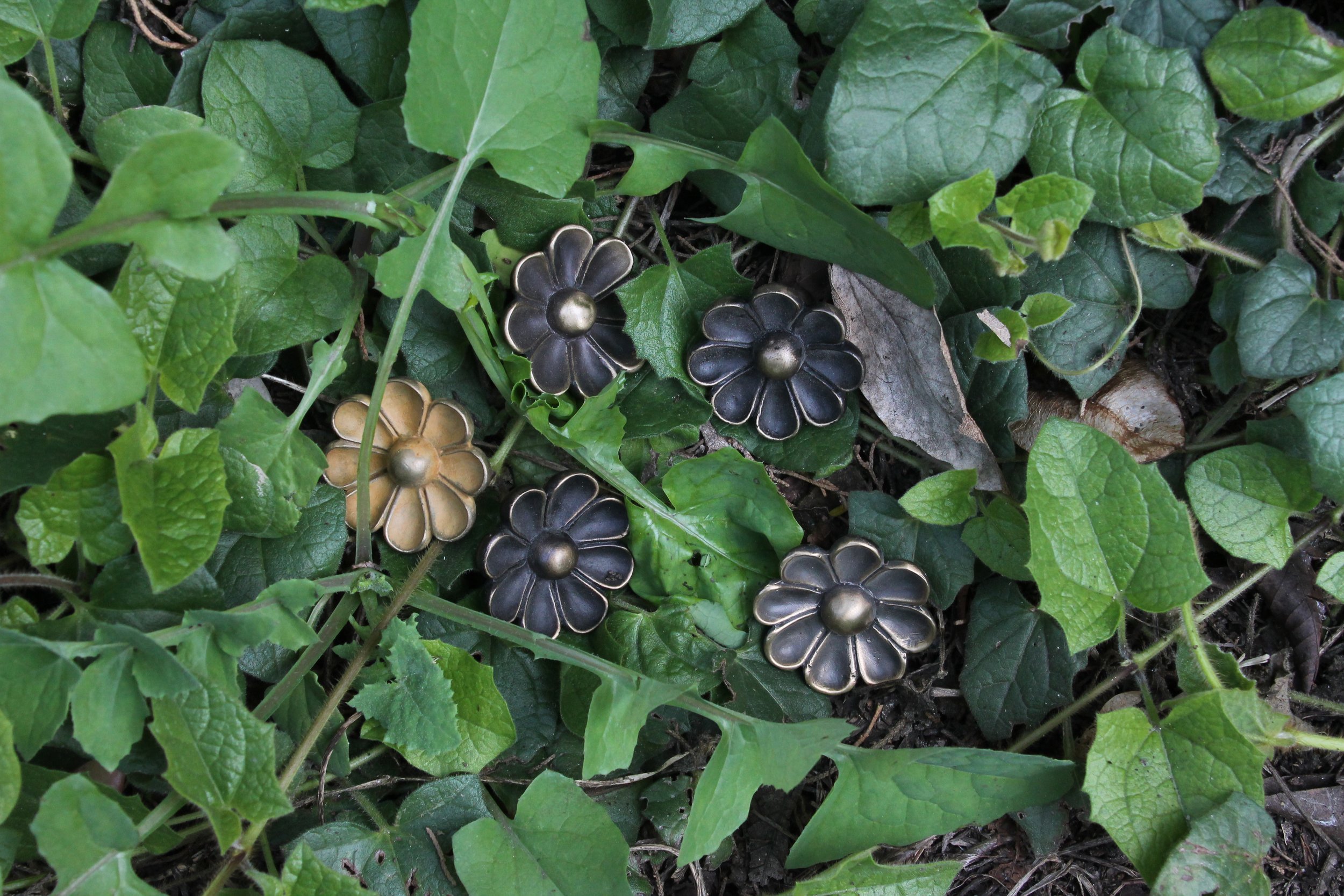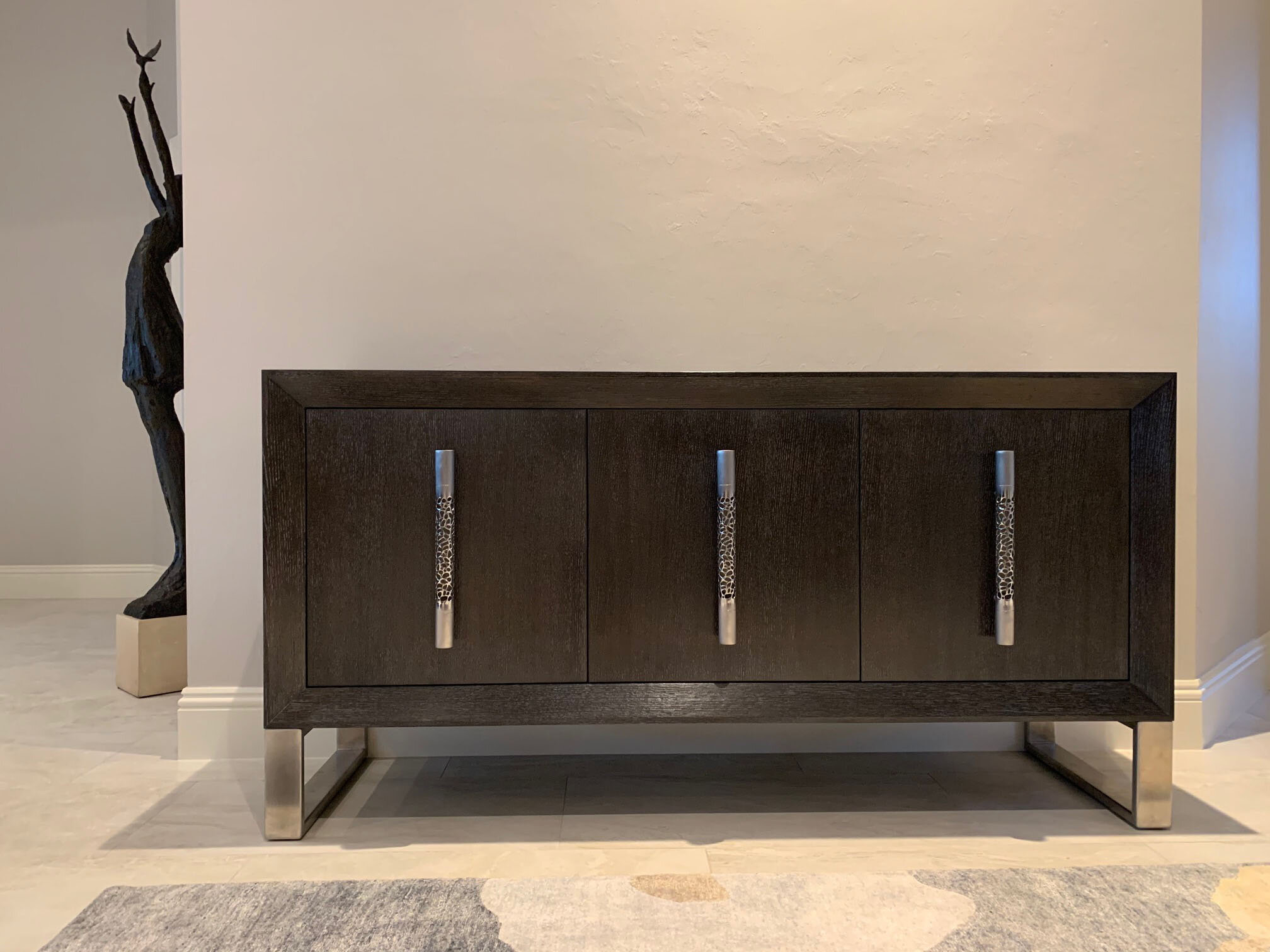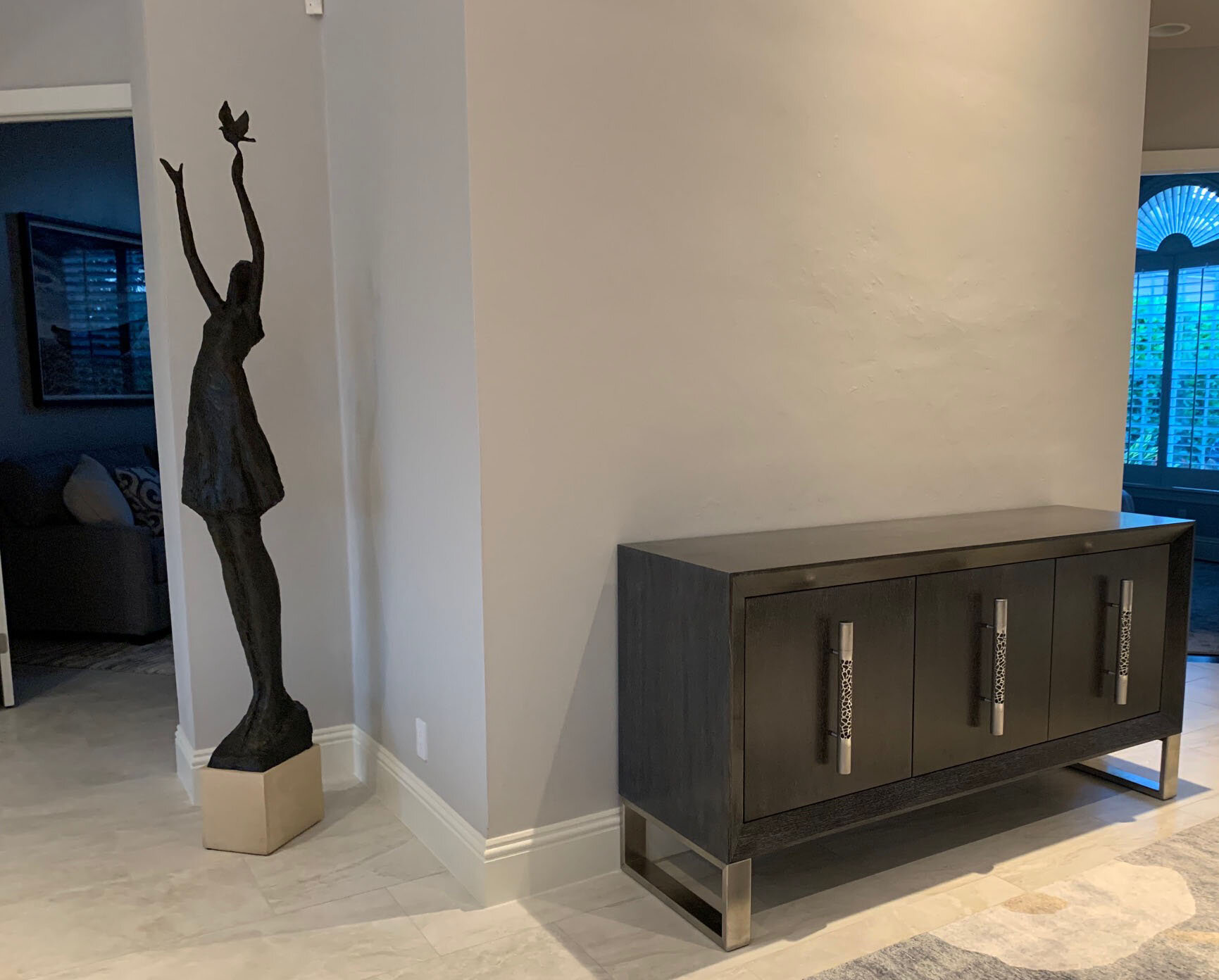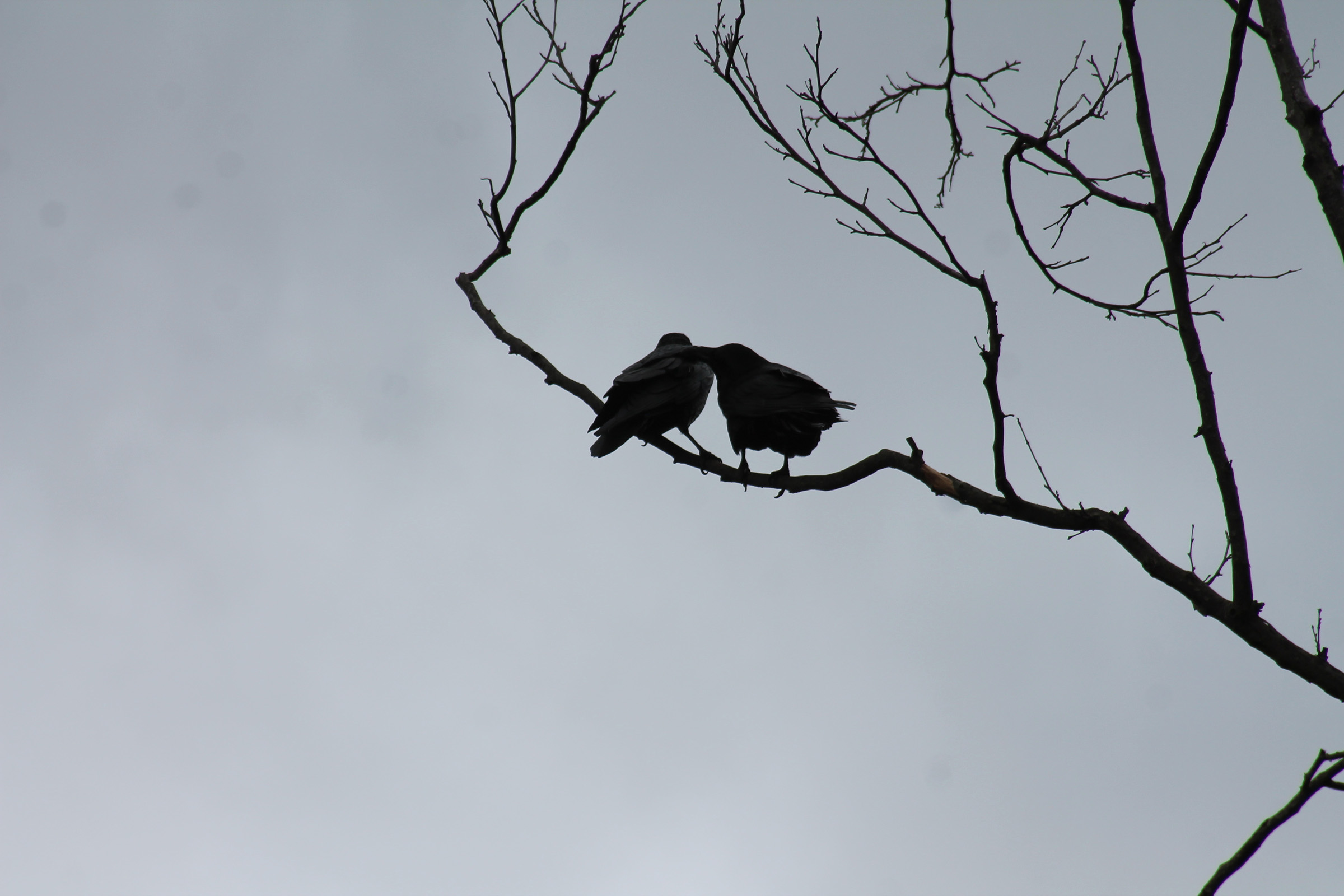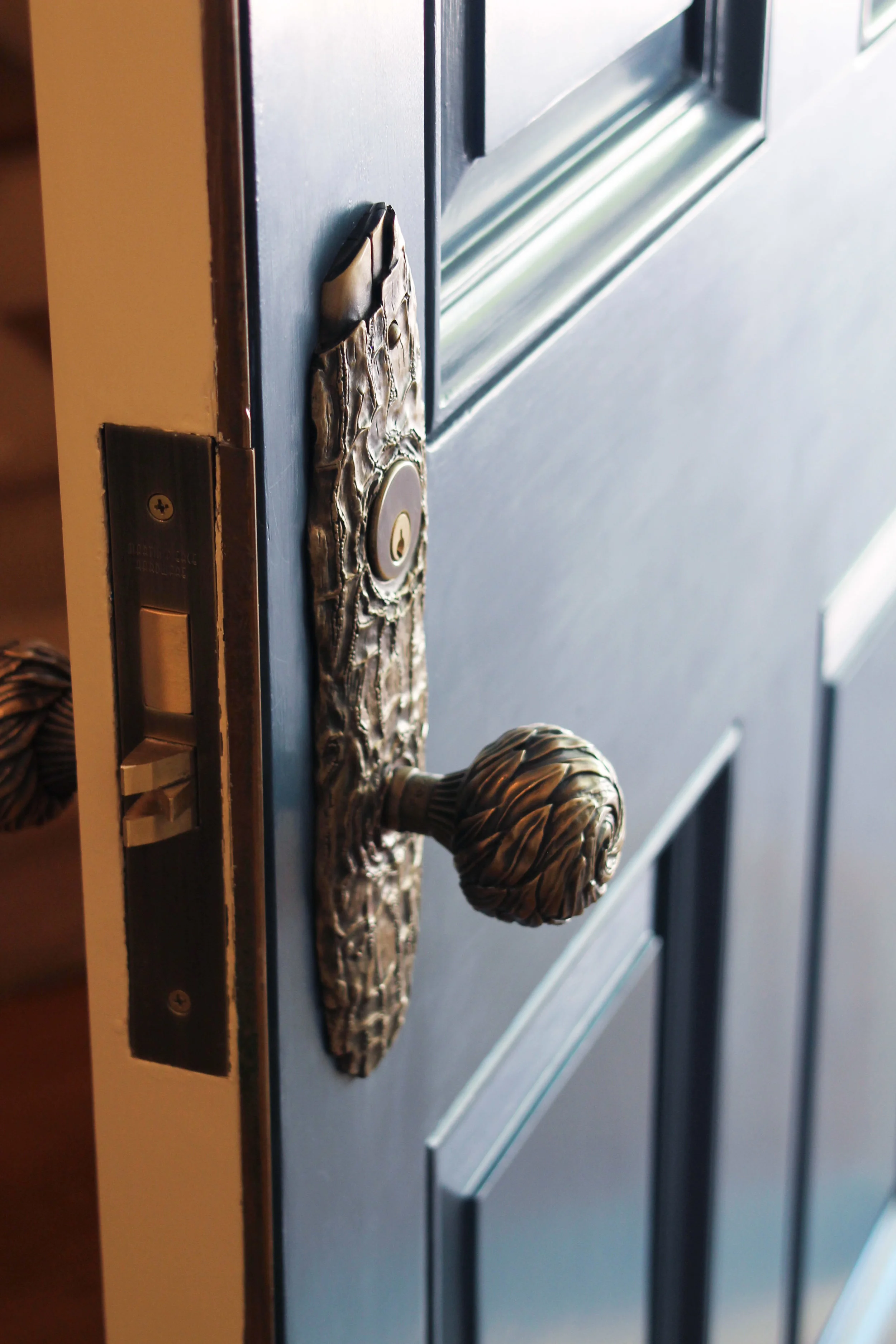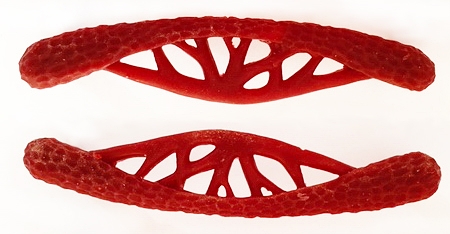Pairing Beauty with Beauty
Turning 50 can be a challenge but when tempered with a beautiful birthday present the experience can become a happy one.
Back in 2009 a close friend was facing this significant birthday so being both a designer of furniture and hardware, Martin Pierce decided to make a significant jewelry box.
As a furniture designer, Martin designed the Ascot series, a collection of pieces using the Japanning technique to add gold and silver leaf to create Aspen trees and vine leaves on his buffets and armoires. As its name suggests, Japanese artists and furniture makers developed Japanning to add richness and depth to their work using the reflective luminescence of gold. While the technique also became established in 18th century English furniture making, Martin only became aware of the technique while in Los Angeles in 1996 making his furniture pieces.
For the 3-tiered jewelry box, Martin used solid cherry with silver and gold leaf. To add texture to the rim of the top Martin used a chip carving technique which he then gold leafed. Each side of the box has a silver leafed tree that is glazed with pigment to create highlights and shadows and to add a more three-dimensional appearance. In the center of the top and on each lower tier a small butterfly from Martin’s cabinet pull collection is used as a pull.
Fine furniture making requires a knowledge of wood varieties and of ways of using these to advantage. In the Ascot collection plain sliced walnut and book matched English oak both with limited figuring were used as backdrop to silver Aspen trees and gold leafed autumnal vine leaves.
Carpathian elm burl and walnut burl are heavily figured veneers whose intense patterns require little adornment. In the piece below 1/32” layers of veneer were applied to a pre-shaped curved box made from medium density particle board (MDF). While not a fan of MDF it is a perfect substratum for veneers as it is stable and not prone to shrinking or expansion when there are changes in humidity. To achieve a tight bond the veneer was applied under pressure in a vacuum press with a polyurethane-based adhesive glue.







